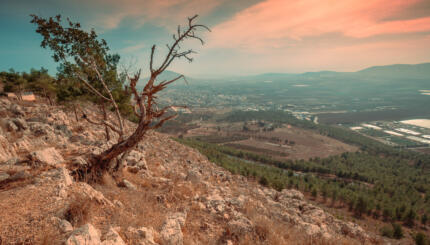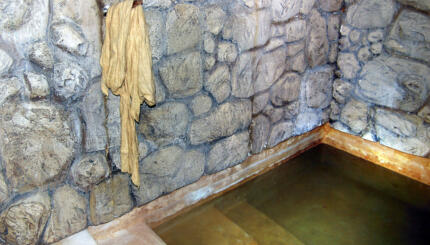The Western Wall beckoned at the beginning of the new Hebrew month of Kislev, 5760.
I was studying at the Conservative Yeshiva for a month and residing at the Ratisbonne, a French Catholic monastery in the heart of downtown Jerusalem. My neighbor for the month was a sixty year old nun from South Africa named Trudy.
Although I had lived in Israel and visited there many times, I had never ventured into the Holy Sepulchre where the Tomb of Jesus resided. Trudy, who had been in Israel nine months, had never experienced the Western Wall, known in Israel as the Kotel. We made a deal on that rainy early morning in December that we would share each other’s holy places.
Trudy and I awoke before dawn and started the 30-minute walk to the Old City. We wanted to be present for the Rosh Chodesh morning prayers that are being sustained by the Women of the Wall, an organization of religiously and socially diverse women who come together once a month on the New Moon at the Western Wall. We reached the Kotel and immediately gazed at the gathering of women on the separated women’s section of the Western Wall. In lullaby hush tones we heard the singing and chanting of some sixty women. We drew closer to this monthly prayer circle. We lingered with them in a bittersweet prayer cocoon for twenty minutes. Like pregnant women getting ready to give birth, they packed their prayer books and the Sefer Torah (the Scroll that held the Five Books of Moses) in anticipation of their journey towards motherhood.
Since the religious municipality that governs the Wall prohibits women from chanting directly from the Sefer Torah’s scroll, the women journey half a mile to a more secluded and less public space known as Robinson’s arch.
The ancient space offered a stone carved table for our precious Sefer Torah. Several women unwrapped the scroll from a large blue duffel bag, and like a newborn baby, they placed her gently and lovingly on this changing table.
The rain turned sun reigned on us; the chatter turned silence shone inside. Trudy and I watched and waited for the next prayer chapter.
As the women prepared the sacred scroll for the reading, they asked if anyone would like to come up and receive an aliya, an honor.
I scanned the women’s faces, absorbed the question and hesitated before I answered. “Yes, I would like an aliya.”
The woman standing next to me was wearing a special “Women of the Wall” tallit embroidered with the names of the four matriarchs on each corner.
“May I borrow your tallit for my aliya?” I asked this stranger pleading as I spoke.
“Yes, but of course,” came her quick unequivocal reply.
The tallit made my aliya complete. This slow holy motion moment remains in my memory.
I returned to my place next to Trudy and removed the tallit from my shoulders. I thanked this beautiful lady for her generosity.
“What a wonderful way to inaugurate my new tallit with your blessings. This is my first time wearing it. Thank you.”
“You are the blessing,” I said.
Sometimes what we need someone else has to give.
Kotel
Pronounced: KOH-tell, Origin: Hebrew, Western Wall in Jerusalem, Judaism's holiest site.
tallit
Pronounced: tah-LEET or TAH-liss, Origin: Hebrew, prayer shawl.



